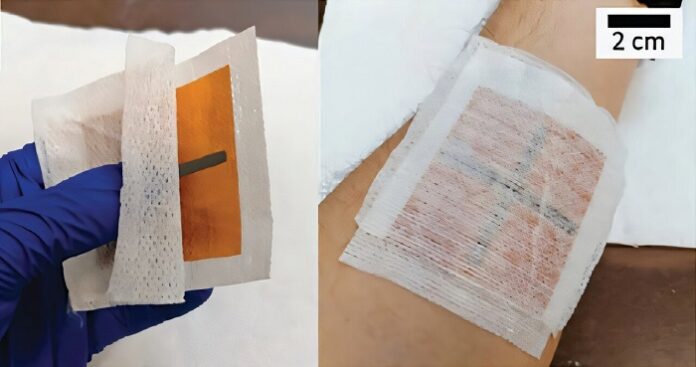An international team led by researchers from Universitat Rovira i Virgili (URV) has developed an advanced medical device capable of continuously and accurately monitoring skin temperature. This intelligent sensor operates without batteries or an external power supply, using a thermoelectric system to detect temperature variations associated with inflammation and infection. The team recently published their findings in Advanced Science.
Collaboration for Innovation
As reported by MedicalXpress, the device was developed as part of a European project. It was created in collaboration with researchers from the University of Porto, who specialize in energy recovery systems. The initial goal was to increase the autonomy of sensors used in medical and industrial environments. “We wanted to eliminate battery dependence and create flexible devices adaptable to the skin or other surfaces,” explained Eduard Llobet, a researcher at URV’s Department of Electronic, Electrical, and Automatic Engineering.
Temperature: A Key Indicator for Health
Skin temperature serves as a crucial marker for detecting wounds, infections, and inflammatory processes. Traditional diagnostic methods, such as infrared cameras or point sensors, require patient immobilization and fail to monitor the entire skin surface. This new device overcomes these limitations by precisely measuring small temperature changes and pinpointing inflammation sites.
How the Device Works
The thermoelectric sensor features a network of thermocouples. These are semiconductor material junctions that generate electrical signals when detecting temperature differences. “It’s like creating a thermal map of the skin, highlighting affected areas,” Llobet explained.
Real-Time Monitoring and High Sensitivity
Validated through numerical simulations and experimental tests on human skin, the device has demonstrated exceptional sensitivity. Even under sweaty conditions simulated with saline solution, it detected temperature variations as small as 0.4°C. It also responded to changes in less than three seconds. This enables real-time wound monitoring and early infection detection.
Pioneering and Sustainable Technology
The device uses flexible thermoelectric materials combined with a conductive polymer printed through techniques similar to T-shirt printing. This innovative approach allows manufacturing on flexible polymeric substrates that seamlessly conform to the skin. “Compared to traditional sensors, this design is not only more precise but also more resistant to external interference, such as sweat or skin movement,” said Llobet.
Durability and Wearability
Researchers at URV’s Department of Mechanical Engineering subjected the sensors to hundreds of bending cycles to test their durability. “The results are very promising—our sensor retains full functionality even after multiple deformations,” confirmed Silvia de la Flor, the department head and research collaborator.
User-Friendly and Adaptable for Future Applications
The sensor presents temperature data as a color map, making it easy for healthcare professionals to identify affected areas without specialized training. “This simplifies clinical decision-making and helps healthcare staff proactively manage patient health,” Llobet noted.
The device, which can be worn for several days before replacement, functions similarly to existing medical monitoring technologies. “The goal is for it to be as comfortable as any wearable device,” added de la Flor.
Expanding Applications and Future Development
This breakthrough paves the way for more personalized and accessible healthcare. The sensor has potential applications beyond detecting infections in surgical wounds and pressure ulcers. Researchers aim to expand its capabilities by integrating biosensors to measure additional physiological variables, such as dissolved gases or specific biomarkers. “Our vision is to continue refining this technology, making it even more versatile and valuable in clinical settings,” the research team concluded.
























